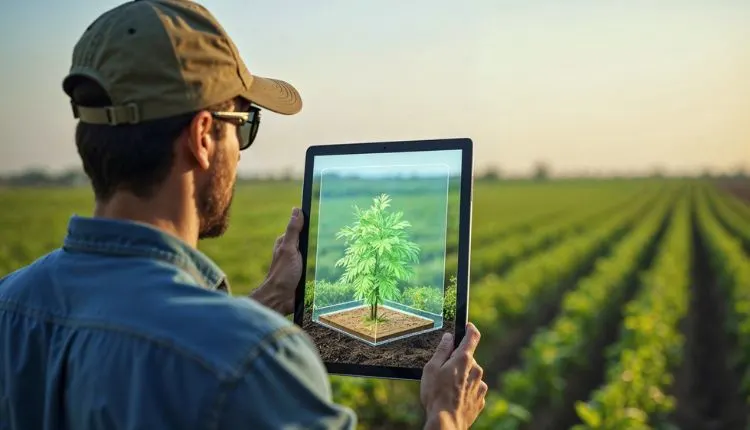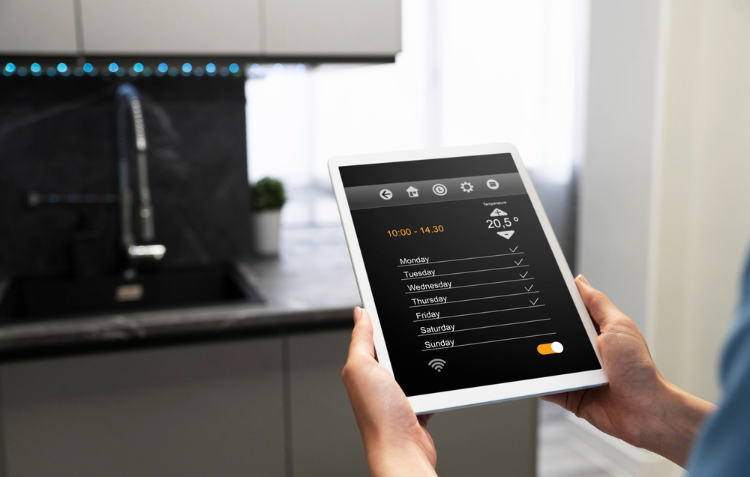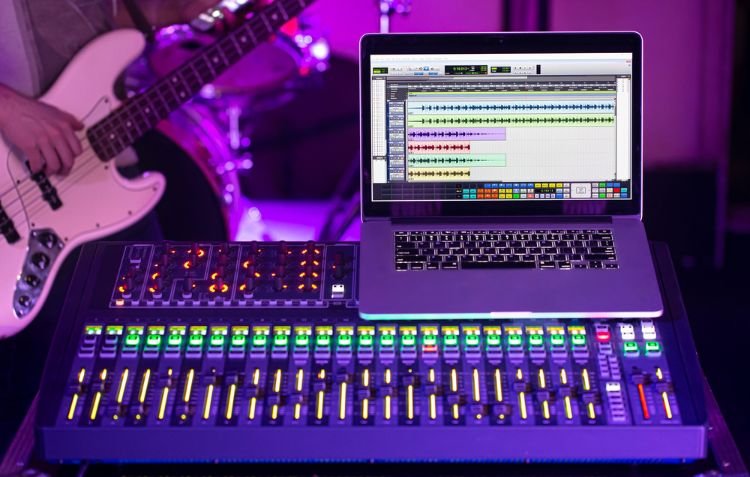How to Integrate Technology with Traditional Farming Fast in 2025
Farming today isn’t just about seeds, soil, and weather—it’s also about data, sensors, and smart tools that bring precision into age-old practices. For many, the idea of “modern farming” sounds like replacing tradition with machines. But the truth is, knowing how to integrate technology with traditional farming means using innovation to strengthen—not erase—the roots of agriculture.
Imagine a Texas farmer using soil moisture sensors to cut water use by 40%. Or a grower in the UK using drones to monitor crop health in real time. These aren’t just fancy upgrades—they’re practical tools that help farmers grow more food, reduce waste, and protect their land.
In fact, the global smart agriculture market is projected to top $30 billion by 2030, according to Fortune Business Insights. That’s a clear signal: technology isn’t the future of farming—it’s part of the present. And when paired with traditional knowledge, it becomes a game-changer.
Key Takeaways
- Combining traditional farming and modern technology creates more sustainable and productive farms.
- Smart soil monitoring improves crop yield and reduces fertilizer waste.
- Drones and GPS tools boost planting accuracy and cut resource usage.
- Smart irrigation systems save water and energy by responding to real-time conditions.
- Mobile apps help farmers track data like crop health, weather, and livestock.
- AI and machine learning tools support predictive farming and better planning.
- Affordable tech options and training resources can overcome cost and learning barriers.
- Real-world success stories show that blending old methods with agri-tech really works.
Why Combine Traditional Farming with Modern Technology?
Blending old wisdom with new tools isn’t just smart—it’s essential. When farmers combine tradition with technology, they create systems that are both productive and sustainable.
Traditional Farming’s Strengths
Traditional farming practices are built on generations of hands-on experience. They reflect deep knowledge of local climates, native crops, and natural cycles. These methods often support biodiversity and promote eco-friendly farming.
Example: Indigenous Australian farmers have long used crop rotation techniques to maintain soil health, limit pests, and reduce erosion—long before modern science confirmed their benefits.
What Technology Adds
Technology brings accuracy, efficiency, and speed to the field. Tools like GPS-guided tractors or weather forecasting apps help reduce guesswork and boost consistency.
Example: GPS-enabled tractors help farmers avoid overlapping passes, cutting down on fuel use and soil compaction—saving both money and the environment.
The Win-Win
When combined, traditional knowledge and modern tools create smarter farming systems. Farmers make better decisions, use fewer resources, and get better results.
Case Study: A UK organic farm improved its crop yield by 25% using tech-assisted soil analysis and targeted composting, all while maintaining traditional no-pesticide practices.
How to Integrate Technology with Traditional Farming
Blending modern technology with traditional farming doesn’t mean replacing age-old wisdom—it means enhancing it. From soil health to harvest tracking, tech tools can support farmers in making smarter, faster, and more sustainable decisions without letting go of what’s always worked.
Integration starts with understanding your land and resources, then introducing simple, affordable tools that offer real benefits. For instance, soil sensors can guide better planting, drones can help monitor crops, and mobile apps can manage daily farm activities—all without disrupting your usual methods.
In this guide, we’ll walk through five practical steps to make this blend work smoothly:
- Smart soil monitoring for healthier land
- Using drones and GPS for precision
- Automating irrigation to save water
- Managing farm data with mobile apps
- Forecasting with AI to reduce risks
Each step is designed to help you grow more while wasting less—bringing together the best of both worlds: experience and innovation.
Step 1 – Start with Smart Soil Monitoring
Understanding your soil is the first step to smart farming. Today’s tech helps farmers go beyond guesswork and take action based on real data.
Why Soil Tech Matters
Soil is the foundation of every crop. Traditional techniques like manual testing and rotational planting work, but they’re time-consuming and may miss changes in real-time soil health.
How to Use Tech
Smart tools make soil monitoring faster and more precise.
- Tools: IoT soil sensors, mobile testing kits, satellite maps.
- Benefits: Real-time data on pH, moisture, temperature, and nutrient levels.
- Use Case: A farmer can know exactly when to irrigate or fertilize, reducing waste.
- Data Point: Smart soil sensors can cut fertilizer waste by up to 35%.
Tool Suggestions:
- CropX – Affordable, beginner-friendly smart soil sensor.
- Teralytic – Wireless sensors with deep soil insights, used widely across the US and UK.
Tip: Most tools sync with apps, giving you live updates on your phone—ideal for daily decision-making.
Step 2 – Use Drones and GPS for Precision Farming

Large or small, every farm can benefit from better visibility and control. Drones and GPS bring accuracy to planting, monitoring, and harvesting.
What It Means
- Drones offer aerial views of crops to check plant health, pest damage, and growth stages.
- GPS helps with precision sowing, harvesting, and mapping.
This combo allows farmers to manage every square meter of their land with purpose.
How It Works
- Drones scan fields and create heatmaps to highlight dry patches or disease zones.
- GPS-enabled tractors plant seeds in perfect rows, reducing overlaps and gaps.
Example: A farmer in Alberta, Canada reduced seed waste by 20% using GPS-driven sowing machines. This also improved plant spacing and boosted yields.
Tip: Apps like DroneDeploy and Agremo turn drone footage into easy-to-read maps and planting plans.
Step 3 – Automate Watering with Smart Irrigation
Water is life in farming—and using it wisely is more important than ever. Smart irrigation brings precision to every drop.
Traditional vs Smart Irrigation
- Traditional: Manual watering or fixed-timer sprinklers.
- Smart: Uses sensors, timers, and weather data to deliver water only when and where it’s needed.
This means less runoff, better root absorption, and lower water bills.
Benefits of Smart Watering
Smart systems cut water waste and protect crops from stress due to over- or under-watering.
Example: An Australian vineyard cut water use by 30% using a drip irrigation system enhanced with soil moisture sensors and weather-syncing.
Tool Suggestions:
- Rachio: Easy-to-install smart sprinkler controller with real-time weather syncing.
- Netafim: Drip irrigation tech combined with advanced moisture monitoring, popular in both US and Australian farms.
These systems help farmers align watering with actual plant needs, not just guesswork.
Step 4 – Manage Farm Data with Mobile Apps
Smart farming isn’t just about machines—it’s about making smarter decisions. And mobile apps help you do just that by organizing all your farm data in one place.
What You Can Track
Farmers can use mobile apps to monitor crop health, keep an eye on changing weather patterns, manage equipment usage, and even track livestock movement. This helps reduce manual paperwork and improves decision-making speed.
Best Apps for Farmers
Popular tools include AgriWebb (widely used in Australia), FarmLogs (ideal for US/Canada), and Agri360 (for broader global use). These apps sync with sensors, GPS equipment, and manual entries to give a full picture of the farm’s performance.
Tip: Choose cloud-based apps to access and update info on-the-go.
Data Point: Farms using mobile apps for data management saw a 25% reduction in operational costs.
Step 5 – Embrace AI and Machine Learning for Forecasting
AI and machine learning are powerful tools in predictive farming. These technologies help you make smarter choices, reduce risks, and plan for long-term sustainability.
What It Does
AI can predict weather changes, crop readiness, and even pest outbreaks before they happen. This means fewer surprises and more control over harvest planning, irrigation, and pesticide use.
Examples in Real Use
Rice farmers in India and the UK are using IBM’s Watson Decision Platform to get early warnings about pest threats and soil conditions. AI tools analyze vast data—from weather forecasts to satellite imagery—to send real-time alerts.
Stat: The AI in agriculture market is expected to grow by 25% annually through 2030.
Common Challenges and How to Overcome Them

Adopting agri-tech can be overwhelming at first. Here are the most common hurdles and simple ways to beat them.
Cost Barriers
Not every farmer can afford high-end equipment. Start small. For example, invest in an affordable soil sensor or a free farm management app. Over time, the returns can fund bigger upgrades.
Learning Curve
New tools can be intimidating. Don’t go it alone. Work with agriculture extension officers or take free online tutorials. Platforms like Coursera, YouTube Farming Channels, and Agri-Tech webinars offer beginner-friendly lessons in local languages.
Connectivity Issues
Poor internet is a real problem in remote areas. Use offline-capable tools or Bluetooth-enabled devices that don’t need constant internet.
Example: A farmer in rural Alberta, Canada, uses solar-powered soil sensors and syncs data via Bluetooth—no Wi-Fi needed.
Related: IoT in Agriculture: Powerful Innovations Transforming Farming
Real-World Success Stories
Across the globe, farmers are blending traditional methods with modern technology—and seeing real results.
USA – Corn Belt Farms
Farmers use satellite imagery and GPS-enabled tractors for ultra-precise planting. Result: higher corn yields and less seed waste.
Australia – Smart Livestock Monitoring
Sheep ranchers are using wearable sensors to track animal health, reduce losses, and cut labor costs.
UK – Regenerative Farming + Tech
Traditional practices like soil resting are now combined with AI-powered crop planning tools. These farms report better soil health and more consistent harvests.
Quick Summary Table:
| Region | Tech Used | Results |
| USA | GPS + Satellite Data | +20% planting accuracy |
| Australia | Livestock Sensors | Health issues detected early |
| UK | AI + Regenerative Techniques | +15% yield, better soil health |
Conclusion: The Future Is a Blend of Old and New
The journey to smart farming doesn’t mean leaving behind tradition. In fact, it’s about using modern technology to strengthen what’s already working—from crop rotation to local knowledge. Whether it’s a simple soil sensor, a mobile app, or AI forecasting, every small step adds up.
Start where you are. Pick one tool. Learn how it works. Scale when you’re ready.
What matters most is not the speed of adoption, but the direction—toward smarter, more sustainable agriculture.
So, here’s a nudge to all farmers: Respect your roots, and reach for what’s next.
Start today. Your future farm is just one smart move away.
FAQs
Is technology replacing traditional farming methods?
No, technology enhances traditional practices by improving efficiency and sustainability without replacing the farmer’s role.
Are ag-tech tools affordable for small farms?
While initial costs can be high, many technologies offer long-term savings and scalable options suitable for small-scale operations.
What are the first steps to integrate tech into farming?
Begin with cost-effective tools like mobile apps or basic sensors to monitor soil and crop health
How does technology contribute to sustainable farming?
Technologies like precision agriculture optimize resource use, reduce waste, and minimize environmental impact.
What challenges might farmers face when adopting new technologies?
Challenges include high initial costs, learning curves, and connectivity issues, but these can be mitigated with proper planning and support.







